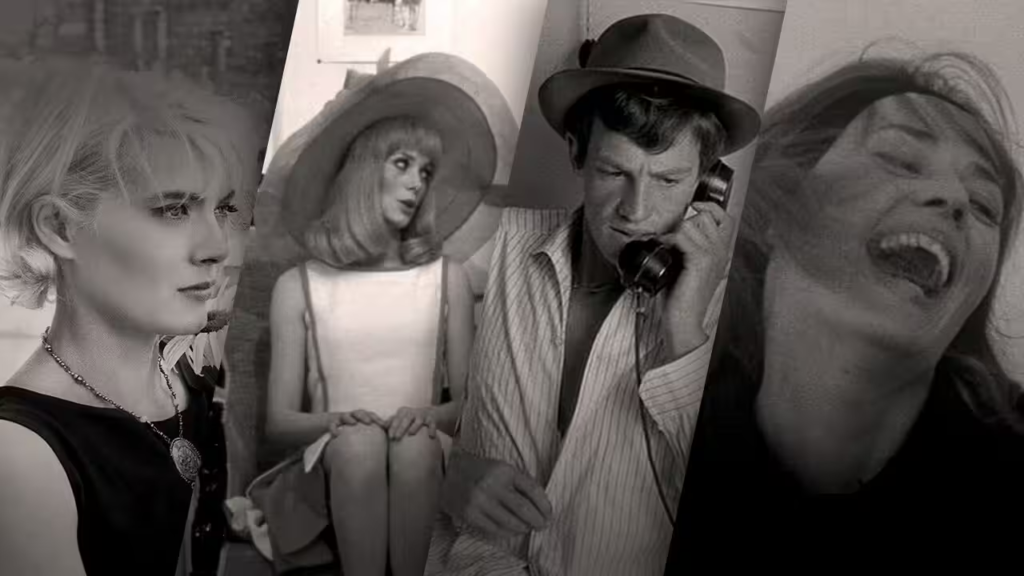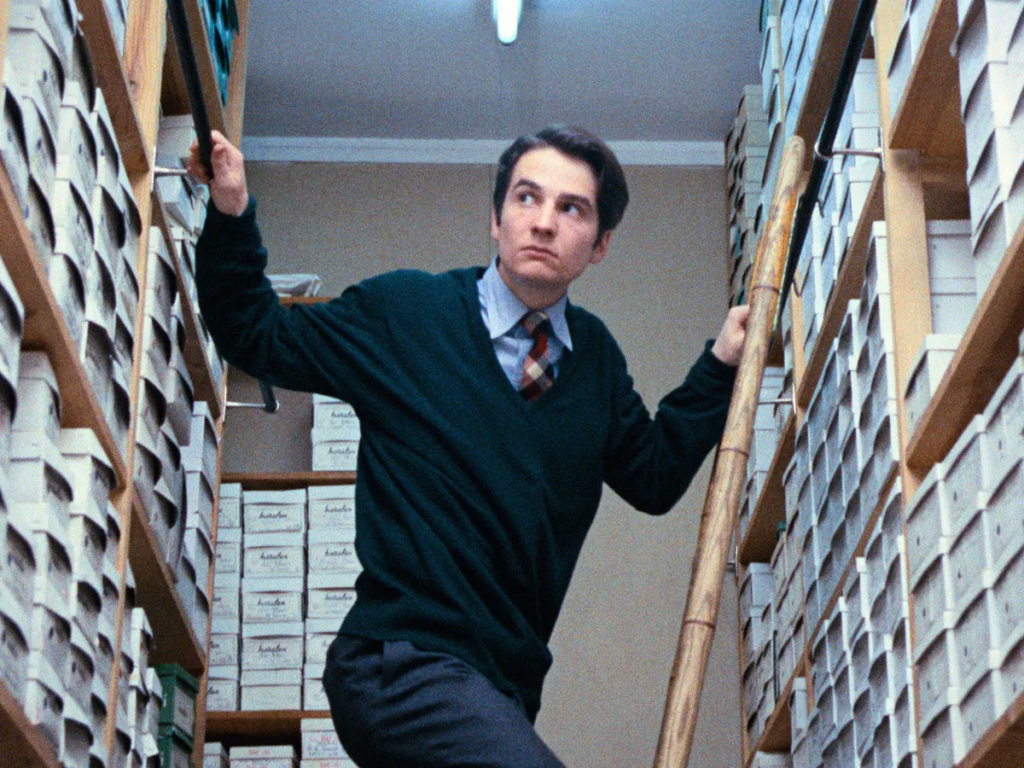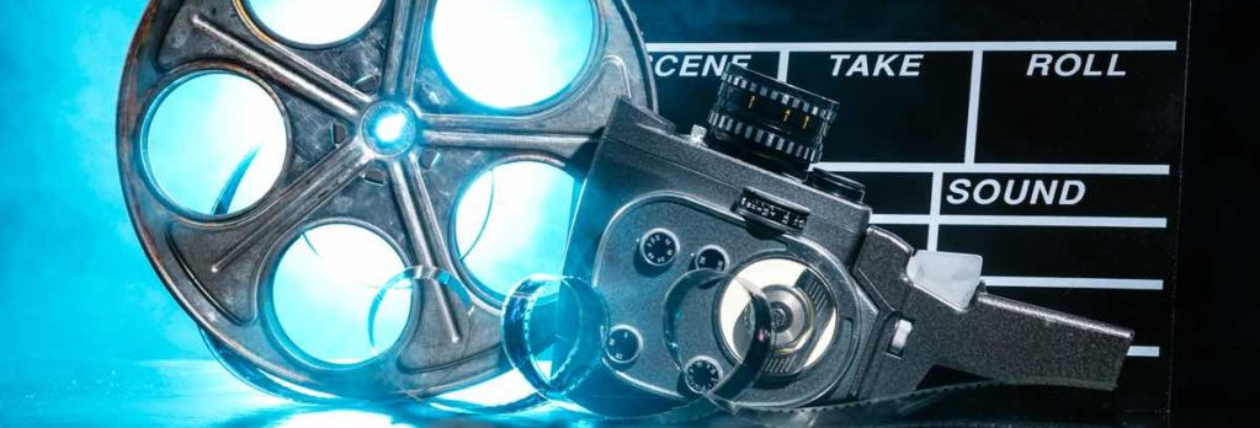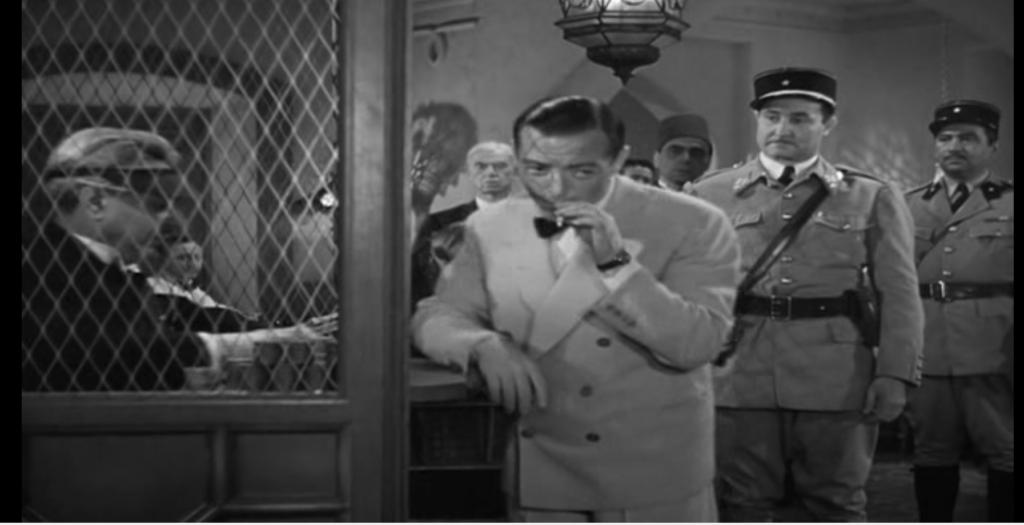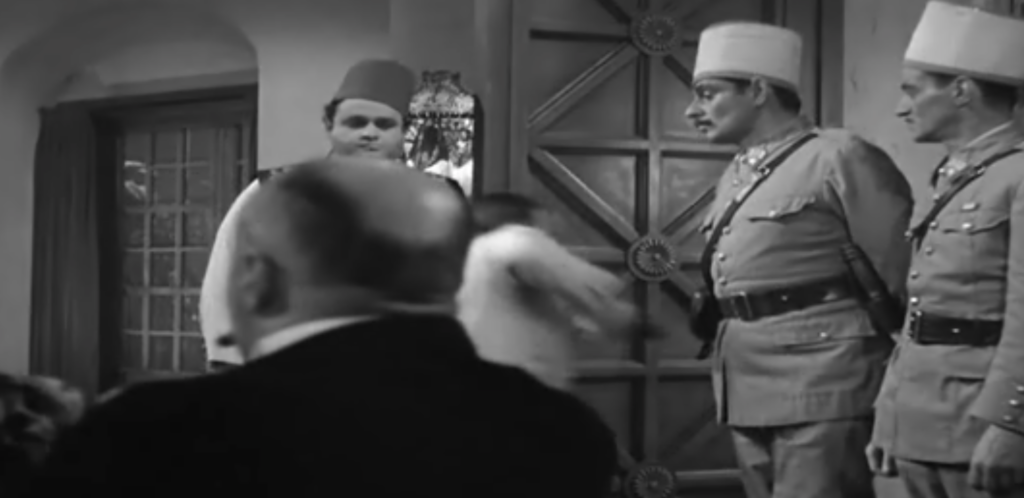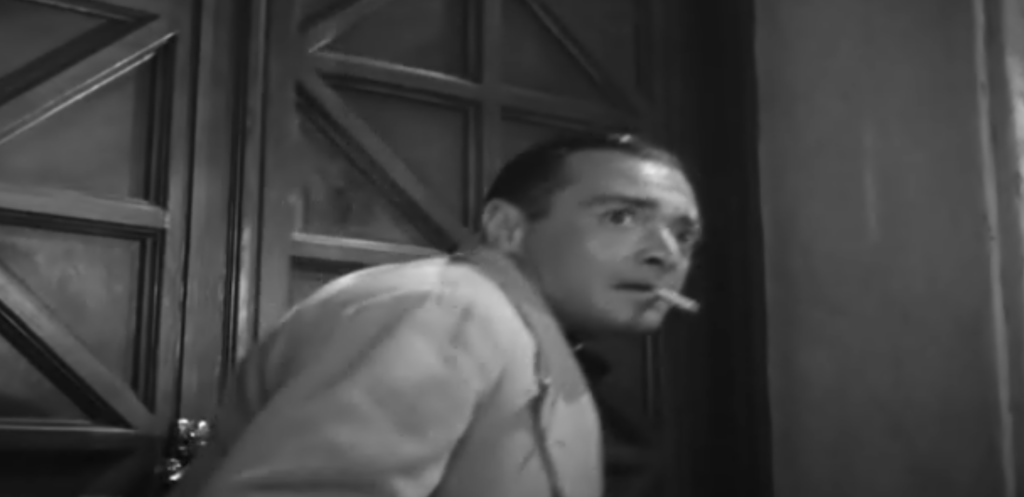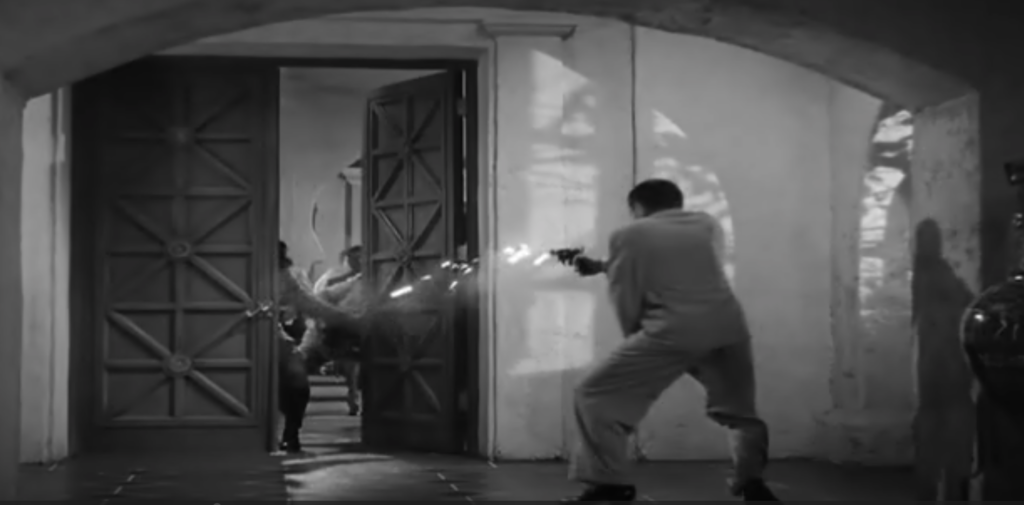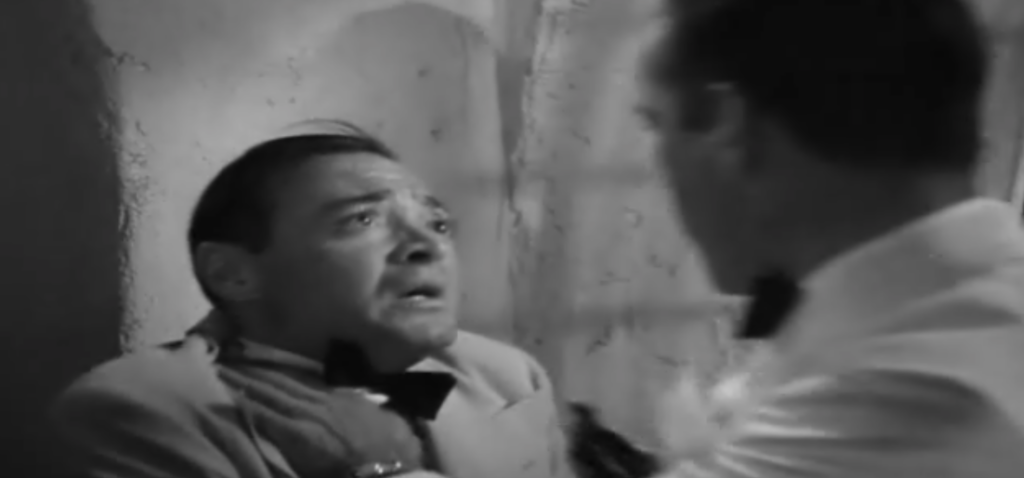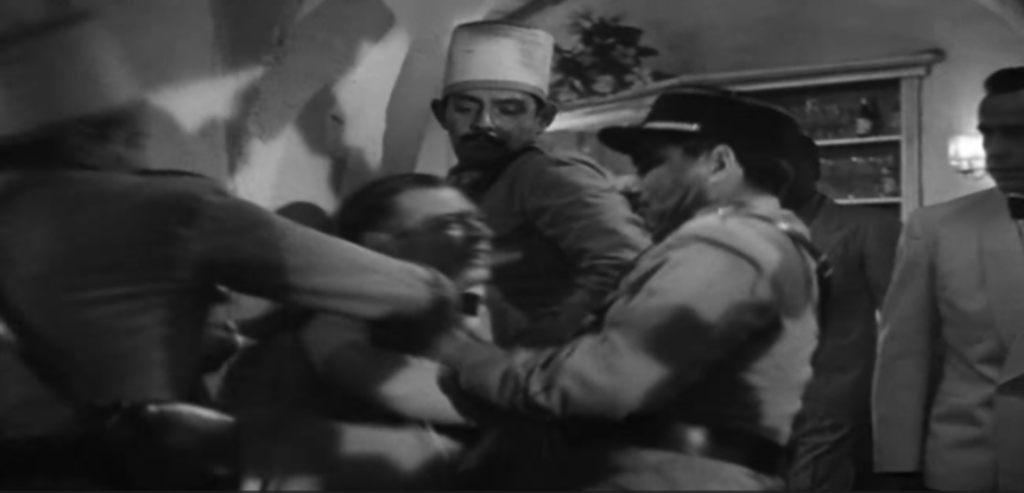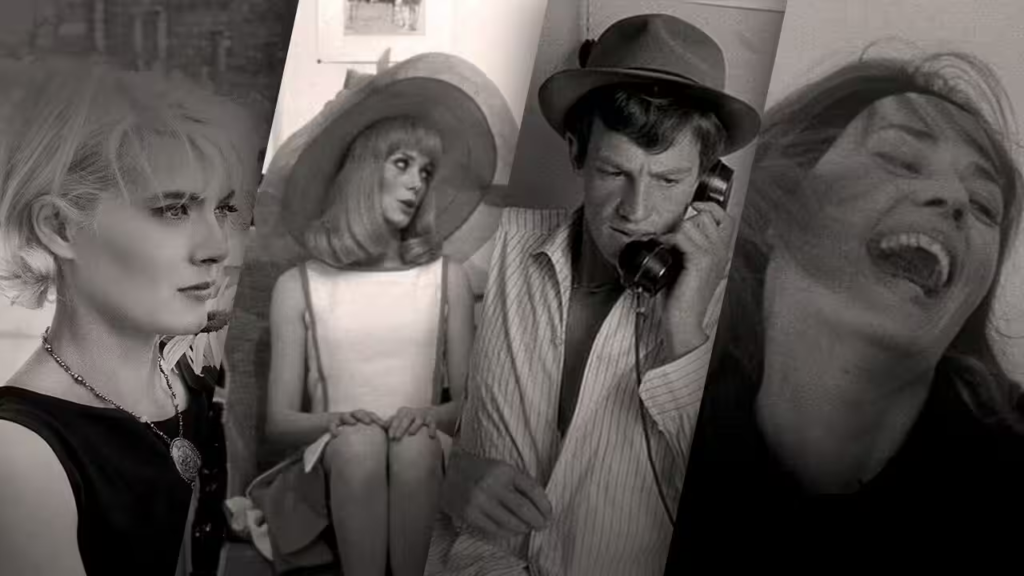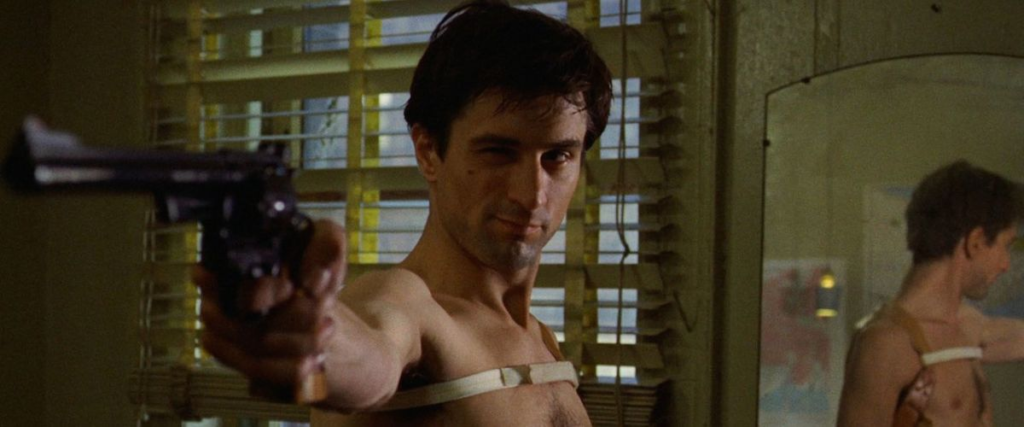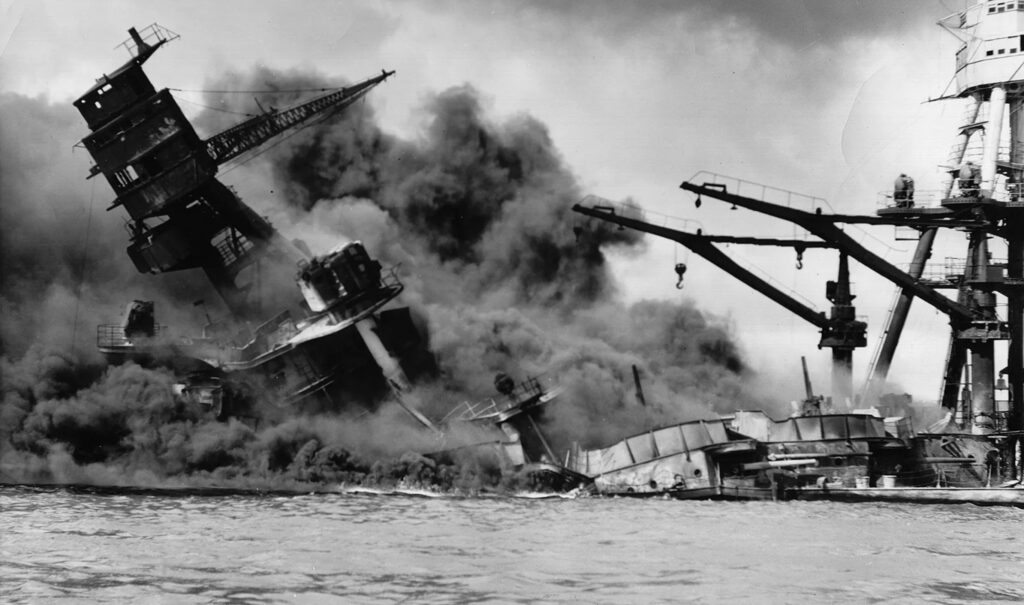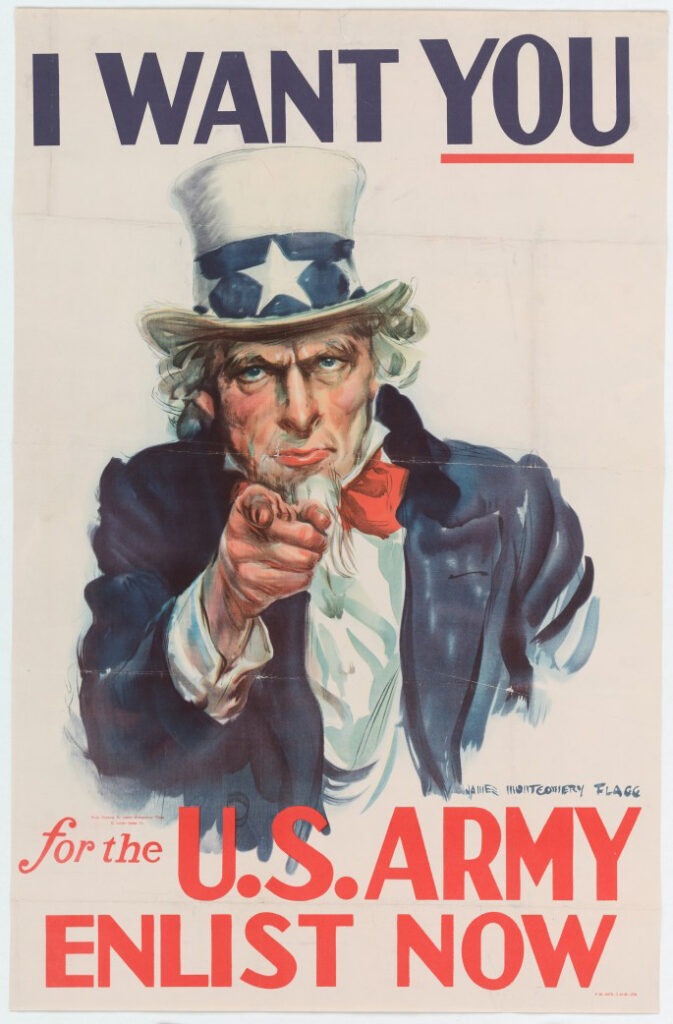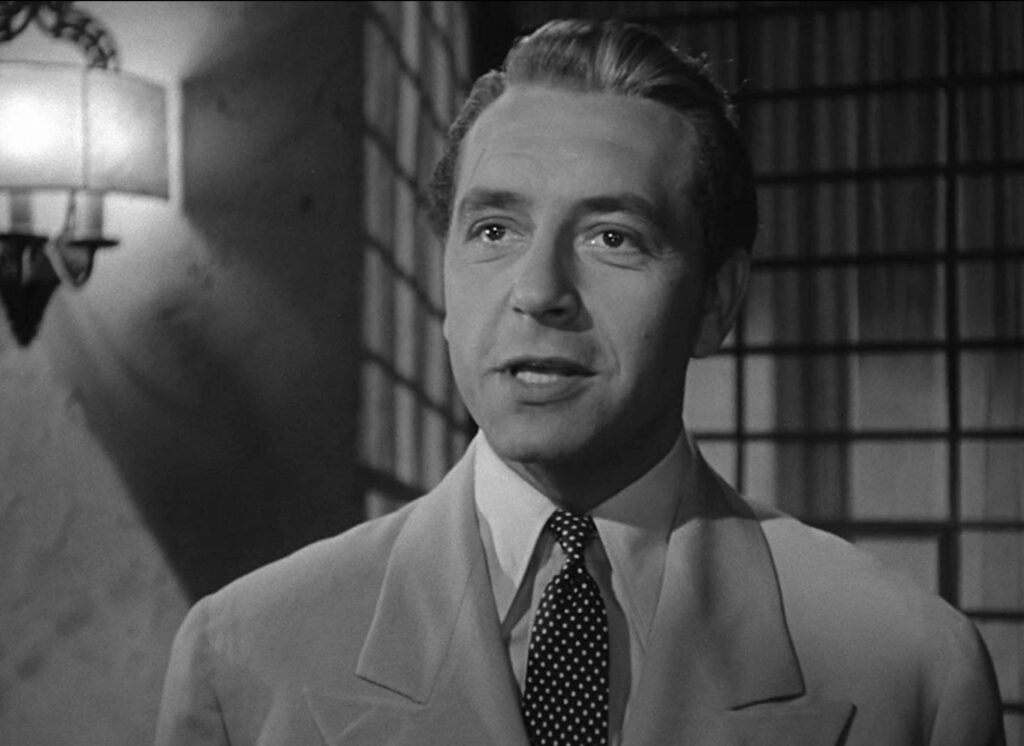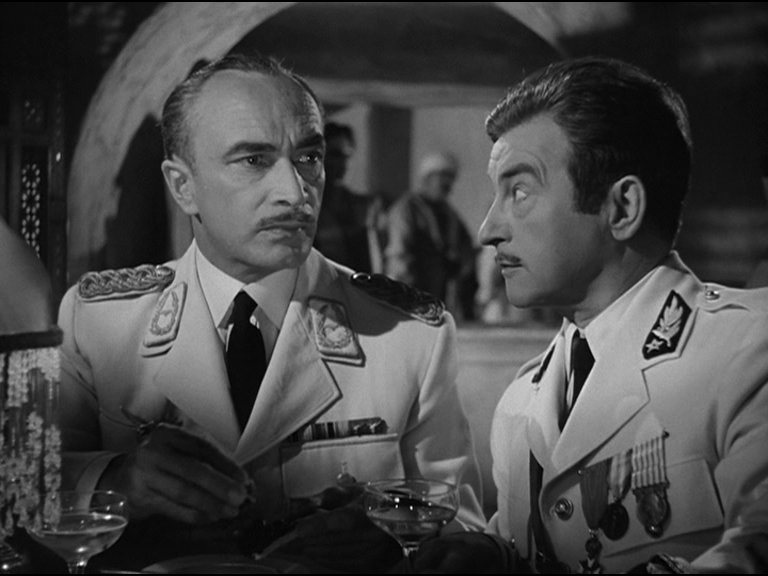Representation:
In terms of historical context, the ideology of how these different groups are represented shows a lot about of how people may of viewed things back then.
Women –
Women in Casablanca, Such as Ilsa, the past love-interest Rick kicks out and the losing gamblers pleading wife are all represented as being almost like accessories to the men, being clung onto or holding onto the men’s arms whilst having decisions made for them. This is best shown in the scene where Ilsa is lovingly clinging to Rick, here she is heard to say “your going to have to do the thinking for both of us”. This in a modern viewpoint is a very patriarchal representation of how women are seen. However during the 1930’s and up until the early 1940’s, Women were often unemployed, having their usual role being in the home, taking care of it and providing for their families, this changed however, as women eventually went to work in factories due to lack of men working because of the war.
Men –
Men in Casablanca are represented as calm and collected, Men such as Victor Lazlo as well as Rick resemble this with their usual expressionless close-ups. Furthermore, Men are shown to be seen to be main decision makers, This can be shown with Rick arranging for Ilsa’s escape with Victor Lazlo. Men can also be shown to be vulnerable, this breaks the usual stereotype as Men in that day were never usually seen to express their emotions. This is shown in the scene where Rick sadly sits at his Bar with tears almost swelling in his eyes as he talks about Ilsa’s return into his life after she had ran away.
Authority Figures –
Authority Figures in Casablanca are represented as mix between corrupt and some signs of fairness. An example of this Mix is Captain Louis Renault, he even admits he is corrupt in a scene where is speaking to rick and in another scene where he closes Ricks Café for gambling just before taking his earning from when he had just been previously playing. Abiding by both Nazi influence and his own, he often helps Rick but additionally betrays him such as reporting the escape of Victor Lazlo. Other representations of Authority figures can be seen with the cruel dictating Nazis, Characters such as Major Strasser represent this as he tries to find ways to arrest Victor Lazlo for his involvement with rebellion activities to the Nazis regime in other European countries.
People of Colour –
People of Colour in Casablanca are represented as either background characters to the setting of Morocco, where people of colour are born there or as an accompanying protagonist to Rick. This can be exampled through Sammy, Ricks Piano player who had travelled with him from France to Morocco. Compared to the society of time where people of colour where still segregated in American, this usage of a black actor as a key part in the story, it shows an early sign of progression in society. This can also be said to act as a form of propaganda, as during the second world war laws on segregation in the US armed forces where lowered so that more men could help in the war effort, Black and white soldiers fought together against the enemy and shared the same equipment, facilities, etc.
Americans –
Americans in Casablanca are represented as divided getting involved with the war, this is shown with the only American, Rick. EX-patriated from his country after becoming stuck in Nazi occupied French-Morocco, he has become distant with his country and the War after losing his true love, Ilsa. Eventually helping in the war effort by helping her and her husband escape to Lisbon. This can been to be a propaganda representation of Americans as during the films release, the Americans involvement with the war was still new. To convince the public to help in the war effort, seeing a fellow countrymen take part would act as good encouragement.
Europeans –
Europeans in Casablanca are represented as either collaborators with the Nazis, such as the Vichy French policemen or Italians who formed the axis with the Germans during the second world war. Other Europeans, like Victor Lazlo, who is Czechoslovakian represent the resistance to the nazis. This could possibly stem from their early occupation dated pre-war showing how they are the most likely to want to fight against the nazis. Obviously, germans in this film are represented as the enemy, the divide in between the main characters and the point of conflict within the storyline.
